Harnessing AI to Achieve the UN Sustainable Development Goals: Role of Governments
Rwanda
Session 351
1. Background
This session, organized by Rwanda, will examine the crucial role of governments in harnessing artificial intelligence (AI) to promote the achievement of the United Nations Sustainable Development Goals (SDGs). Through a series of insightful presentations and discussions, the session will showcase examples and case studies illustrating how AI can drive sustainable development across various development sectors.
Key topics will include the development of effective AI policies and regulatory frameworks, the importance of public-private partnerships, and the need for robust digital infrastructure. Furthermore, the session will address the ethical considerations of AI, emphasizing the importance of inclusivity and equity.
The session aims to equip attendees with practical strategies and actionable steps to harness the power of AI for achieving the SDGs.
2. Successful projects relevant to the thematic focus
Rwanda has made remarkable strides in harnessing technology for sustainable development in recent years, distinguishing itself through its proactive approach in integrating innovative solutions. The nation's successful implementation of the National AI Policy has propelled it to the forefront of AI adoption, facilitating transformative advancements in sectors such as healthcare, agriculture, and education.
Rwanda has recently launched a National Health Intelligence Centre (NHIC), a strategic platform designed to enhance real-time data collection, analysis, and evidence-based decision-making in the healthcare sector. This centre aims to optimize the health system by integrating data from various sources and employing advanced technologies, including artificial intelligence, to inform policy development and improve population health outcomes. “We are leveraging real-time data and AI for disease surveillance, resource allocation, and smart policy-making to transform our health systems,” said the Health Minister.
The Health Intelligence Centre was officially unveiled as Rwanda hosted the AI Global Summit for Africa from April 3–4, 2025. The summit brought together over 1,000 participants from more than 95 countries, including policymakers, multilateral organizations, and technology firms, to explore the role of artificial intelligence in driving inclusive economic growth, fostering innovation, and enhancing workforce skills across Africa.
This session underscores Rwanda's commitment to leveraging AI as a transformative tool for advancing the Sustainable Development Goals (SDGs) and aligns with WSIS Action Lines, particularly in enhancing public governance, promoting access to information and knowledge, fostering ICT applications, and international cooperation. Through collaborative discussions, we aim to illustrate how strategic government intervention in AI can drive societal progress, paving the way for a sustainable and inclusive future.
-
 C1. The role of governments and all stakeholders in the promotion of ICTs for development
C1. The role of governments and all stakeholders in the promotion of ICTs for development
-
 C2. Information and communication infrastructure
C2. Information and communication infrastructure
-
 C3. Access to information and knowledge
C3. Access to information and knowledge
-
 C4. Capacity building
C4. Capacity building
-
 C5. Building confidence and security in use of ICTs
C5. Building confidence and security in use of ICTs
-
 C6. Enabling environment
C6. Enabling environment
-
 C7. ICT applications: benefits in all aspects of life — E-government
C7. ICT applications: benefits in all aspects of life — E-government
-
 C7. ICT applications: benefits in all aspects of life — E-business
C7. ICT applications: benefits in all aspects of life — E-business
-
 C7. ICT applications: benefits in all aspects of life — E-learning
C7. ICT applications: benefits in all aspects of life — E-learning
-
 C7. ICT applications: benefits in all aspects of life — E-health
C7. ICT applications: benefits in all aspects of life — E-health
-
 C7. ICT applications: benefits in all aspects of life — E-employment
C7. ICT applications: benefits in all aspects of life — E-employment
-
 C7. ICT applications: benefits in all aspects of life — E-environment
C7. ICT applications: benefits in all aspects of life — E-environment
-
 C7. ICT applications: benefits in all aspects of life — E-agriculture
C7. ICT applications: benefits in all aspects of life — E-agriculture
-
 C7. ICT applications: benefits in all aspects of life — E-science
C7. ICT applications: benefits in all aspects of life — E-science
-
 C8. Cultural diversity and identity, linguistic diversity and local content
C8. Cultural diversity and identity, linguistic diversity and local content
-
 C9. Media
C9. Media
-
 C10. Ethical dimensions of the Information Society
C10. Ethical dimensions of the Information Society
-
 C11. International and regional cooperation
C11. International and regional cooperation
Governments play a central role across multiple WSIS Action Lines to strategically harness AI for the SDGs:
1.1. Governance & Stakeholders (C1): Policy design, regulation, public-private partnerships.
1.2. Trust & Security (C5): Ethical oversight, privacy protection, bias mitigation
1.3. Capacity Building (C4): Skills development, public literacy, reskilling
1.4. Digital Access (C3, C2): Infrastructure, open data, equitable model access
1.5. Enabling Ecosystem (C6): Innovation financing, digital public goods, legal frameworks
1.6. Application Use (C7): Health, education, agriculture, climate solutions
1.7. Ethical Anchoring (C10): Rights-based AI deployment with transparency
1.8. International Cooperation (C11): Global funds, advisory panels, shared standards
-
 Goal 1: End poverty in all its forms everywhere
Goal 1: End poverty in all its forms everywhere
-
 Goal 2: End hunger, achieve food security and improved nutrition and promote sustainable agriculture
Goal 2: End hunger, achieve food security and improved nutrition and promote sustainable agriculture
-
 Goal 3: Ensure healthy lives and promote well-being for all
Goal 3: Ensure healthy lives and promote well-being for all
-
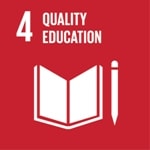 Goal 4: Ensure inclusive and equitable quality education and promote lifelong learning opportunities for all
Goal 4: Ensure inclusive and equitable quality education and promote lifelong learning opportunities for all
-
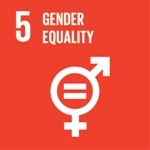 Goal 5: Achieve gender equality and empower all women and girls
Goal 5: Achieve gender equality and empower all women and girls
-
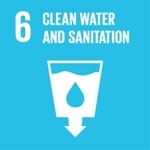 Goal 6: Ensure access to water and sanitation for all
Goal 6: Ensure access to water and sanitation for all
-
 Goal 7: Ensure access to affordable, reliable, sustainable and modern energy for all
Goal 7: Ensure access to affordable, reliable, sustainable and modern energy for all
-
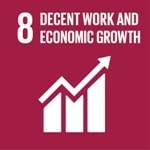 Goal 8: Promote inclusive and sustainable economic growth, employment and decent work for all
Goal 8: Promote inclusive and sustainable economic growth, employment and decent work for all
-
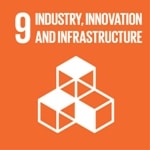 Goal 9: Build resilient infrastructure, promote sustainable industrialization and foster innovation
Goal 9: Build resilient infrastructure, promote sustainable industrialization and foster innovation
-
 Goal 10: Reduce inequality within and among countries
Goal 10: Reduce inequality within and among countries
-
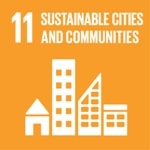 Goal 11: Make cities inclusive, safe, resilient and sustainable
Goal 11: Make cities inclusive, safe, resilient and sustainable
-
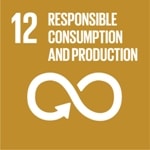 Goal 12: Ensure sustainable consumption and production patterns
Goal 12: Ensure sustainable consumption and production patterns
-
 Goal 13: Take urgent action to combat climate change and its impacts
Goal 13: Take urgent action to combat climate change and its impacts
-
 Goal 14: Conserve and sustainably use the oceans, seas and marine resources
Goal 14: Conserve and sustainably use the oceans, seas and marine resources
-
 Goal 15: Sustainably manage forests, combat desertification, halt and reverse land degradation, halt biodiversity loss
Goal 15: Sustainably manage forests, combat desertification, halt and reverse land degradation, halt biodiversity loss
-
 Goal 16: Promote just, peaceful and inclusive societies
Goal 16: Promote just, peaceful and inclusive societies
-
 Goal 17: Revitalize the global partnership for sustainable development
Goal 17: Revitalize the global partnership for sustainable development
Governments play a foundational role in ensuring that AI is developed and used in ways that directly advance each of the 17 SDGs. Their leadership in policy-making, regulation, funding, and collaboration is critical to realizing the full potential of AI as a tool for sustainable development.
1. No Poverty (SDG 1)
Governments may use AI to identify poverty-stricken regions through satellite imagery and socio-economic data. AI helps governments target aid programs more effectively.
2. Zero Hunger (SDG 2)
Governments may use AI in precision agriculture (e.g., soil analysis, crop monitoring, yield prediction). AI reduces food waste by optimizing supply chains.
3. Good Health and Well-being (SDG 3)
Governments may use AI in disease diagnosis, drug discovery, and pandemic forecasting (e.g., COVID-19 models). AI supports telemedicine and remote health monitoring.
4. Quality Education (SDG 4)
Governments may use AI to power personalized learning platforms and virtual tutors. AI expands access to education in remote or underserved areas.
5. Gender Equality (SDG 5)
Governments may use AI to monitor gender bias in media, hiring, and public discourse. Chatbots and digital platforms help empower women with access to information.
6. Clean Water and Sanitation (SDG 6)
Governments may use AI to analyse water usage and predict shortages or contamination. AI supports efficient water resource management.
7. Affordable and Clean Energy (SDG 7)
Governments may use AI to help manage renewable energy grids by forecasting demand and supply. It enhances energy efficiency in homes, cities, and industries.
8. Decent Work and Economic Growth (SDG 8)
Governments may use AI to increase productivity and foster innovation. AI also raises questions about job displacement, requiring proactive policies.
9. Industry, Innovation and Infrastructure (SDG 9)
Governments may use AI to drive smart manufacturing, predictive maintenance, and infrastructure planning. AI enables digital innovation.
10. Reduced Inequalities (SDG 10)
Governments may use AI tools to detect and address systemic discrimination or inequality in services. It supports inclusive financial services and digital access.
11. Sustainable Cities and Communities (SDG 11)
Governments may use AI to enable smart city technologies: traffic control, energy efficiency, and pollution monitoring. It helps in disaster response and urban planning.
12. Responsible Consumption and Production (SDG 12)
Governments may use AI to track product life cycles and optimize waste management. AI assists in sustainable supply chain management.
13. Climate Action (SDG 13)
Governments may use AI to model climate patterns and support mitigation strategies, and enhance disaster prediction and carbon footprint monitoring.
14. Life Below Water (SDG 14)
Governments may use AI to monitor ocean pollution, illegal fishing, and marine biodiversity. Satellite data helps track changes in ecosystems.
15. Life on Land (SDG 15)
Governments may use AI to support wildlife monitoring, anti-poaching efforts, and deforestation tracking. It enhances biodiversity data analysis.
16. Peace, Justice and Strong Institutions (SDG 16)
Governments may use AI to detect misinformation, corruption, and violence trends. AI enhances transparency and public service delivery.
17. Partnerships for the Goals (SDG 17)
Governments may use AI to foster global cooperation through shared data platforms and open innovation. AI supports cross-sector collaboration and progress monitoring.
- Objective 1: Close all digital divides and accelerate progress across the Sustainable Development Goals
- Objective 2: Expand inclusion in and benefits from the digital economy for all
- Objective 3: Foster an inclusive, open, safe and secure digital space that respects, protects and promotes human rights
- Objective 4: Advance responsible, equitable and interoperable data governance approaches
- Objective 5: Enhance international governance of artificial intelligence for the benefit of humanity
www.minict.gov.rw;www.rura.rw;https://c4ir.rw/;www.risa.rw;